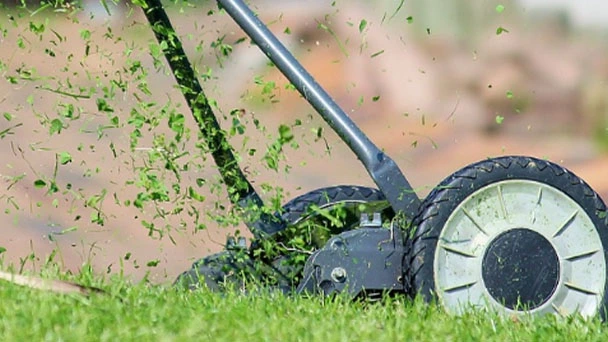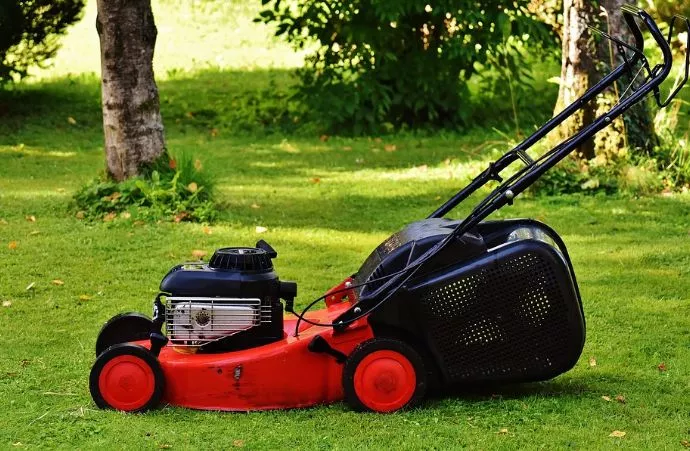How Short To Cut Grass for Winter Care - Everything You Should Know
Written by Ivy
Dec 28 2022

You've faithfully kept the grass mowed from spring to fall, but how short should you make it before winter arrives? We have the height recommendations you need to ace your final cut.
When it comes to the last mowing of the lawn before winter, there has long been discussion about the ideal height to cut the grass at. Some claim that it needs to be cut shorter than usual. Others contend that it ought to be cut at standard height. You can decide whether the final mowing of the season should be done at a lower or normal height after we've looked at both arguments.
When Does Grass Stop Growing?
We avid gardeners and lawn lovers love photosynthesis. To ensure steady growth, grass uses the sun's energy, the atmosphere's carbon dioxide, and the soil's water. In an effort to protect itself from the upcoming high temperatures, grass goes dormant as we get closer to the cooler weather of the winter months.
As soon as daytime temperatures consistently fall below 40 to 50 degrees Fahrenheit, grass starts to slow down. This temperature may occur earlier or later in the year depending on where you are.
Should You Cut Your Grass before Winter?
100%, you certainly should cut your grass before winter. To cut short hair properly, however, you shouldn't do so all at once. Instead of giving your grass one big chop, the best practice tells us to gradually lower it. Preventing diseases, attracting less debris, and reducing the likelihood of snow mold in the North are all benefits of cutting your grass short before winter.
What Grass Height Should You Mow Your Lawn before Winter?
One of the most crucial elements to maintaining the health of your grass is routine lawn mowing. The lengths at which you should mow your lawn depend on the type of grass you have there. However, depending on the type of grass, the recommended winter grass height is 2 inches. Due to the chilly winter temperatures, grass that is cut too short may experience shock, while grass that is left too long may be more susceptible to snow mold development.
When is It Too Late in the Season Or Too Cold to Mow Grass?
You should be checking your local weather for the anticipated first frost as the temperatures start to fall and you pull your winter coats out of the back of your closet. You can make plans to mow the grass a few times prior to the anticipated first frost once you know when it will occur. The best time to mow the lawn before winter is right now. Up until the grass is about 2 inches tall, you should slowly mow the lawn by slightly lowering the blade height each time. Before putting your mower away for the season, it is essential to complete the final cut of the season.
Read More: When is the Best Time to Mow My Lawn
Cutting Grass before a Freeze: Can You Mow After Frost?
You may want to avoid walking on frozen grass, have you heard? For mowing following a frost, the same guidelines apply. After a frost, any activity on the lawn can break the grass blades and harm the lawn because the moisture inside the grass blades freezes.
The best practices are to avoid mowing your lawn when it is below 40 degrees Fahrenheit and make sure that it doesn't have a lot of moisture from snow or ice if you must mow your lawn after a frost.
Can You Damage Your Lawn by Cutting It Too Late in the Season?
Different grass species exhibit damage-related symptoms. Frequent frosty nights during the winter can cause a lawn's surface to become visibly damaged. It is not recommended to mow grass when it is cold because frost freezes the grass blades.
If you really want to mow your lawn, make sure that it is dry, the sun is hot enough to melt the frost, and that you only cut 13 inches of grass.
How Grass Type Affects Mowing Height
Prior to discussing ideal mowing heights, let's briefly digress to discuss the various types of grass. You should be sure to mow according to the specific needs of your particular type of grass because different grass types have different requirements.
In colder climates, you can find cool season grasses like creeping bentgrass, tall fescue, perennial ryegrass, and Kentucky bluegrass. In other words, if you reside in the Northeast, Midwest, or Pacific Northwest of the United States., your grass falls into this category.
In the sweltering Southern and Southwest regions of the United States., warm season grasses are the norm. For example, bermudagrass, centipedegrass, and zoysiagrass are common varieties.

How Short to Cut Grass in Spring
Your lawn is prepared for a new growing season with a shorter spring cut that removes any winter-burned strands. Cut warm season grasses as short as half an inch and as tall as 1.5 inches, while cool season grasses should be mowed to a height of 3 inches or more.
What Height Should Grass Be Cut in the Summer?
Lawn height increases in the summertime, just like the temperature. The soil of the lawn is shaded because there are taller grasses covering it; this keeps crabgrass and other bothersome weeds from growing there and shields the roots from the intense heat.
For tall fescue and perennial ryegrass, cut your cool season grass to 3 or 3.5 inches in the summer, or up to 4 inches. Warm season grasses should have a round end at a height of 2 to 2.5 inches.
The Best Height to Cut Grass in the Fall
Mid-length grass is preferred as autumn approaches. Tall grass has the potential to mat and rot in the winter. However, if the grass is cut too short, the roots may be exposed to extremely cold temperatures. Strike the right balance in the fall to prepare your lawn for the winter.
Prior to the first winter frost, trim your cool season grass to a height of about 2.5 inches. In the fall, trim warm-season grasses to 1.5 or 2 inches.
Read more about lawn grass care:
- How to Fix Your Burnt Grass - Get Your Lawn Green Again
- How to Make Your Grass Green Fast & Naturally
- How to Plant Teff Grass - Is It Good for Pasture?
- Real Grass vs Artificial Grass - Differences & How to Choose
- How Long Does It Take for New Grass Seed to Germinate?
- Will Watering Dead Grass Bring It Back - Dead Grass Reviving
- How To Fix Yellow Grass to Green Fast - Ways & Tips
- How To Revive Dead Grass and a Dead Lawn - What to Avoid
FAQs
How to Measure Grass Height
Simply put the end of a ruler or tape measure on the ground and measure to the tip of the blades.
Should You Keep Grass Long Or Short for Winter
Your lawn is susceptible to disease if it is overgrown. The ideal grass height for winter is between 2 inches and 2.5 inches. This keeps the grass at a length that will prevent the spread of disease while preventing it from being overly stressed by the cold.
When Should the Last Mow of the Season Take Place?
Mow consistently until the grass stops expanding. The general rule of thumb is that it occurs when daytime highs drop below 50 degrees Fahrenheit, which typically occurs in late October.Should Grass Be Cut Shorter in the Fall?
In order to prepare your lawn for winter, concentrate on finding the right balance in the fall. Before the first frost of the winter, cut your cool season grass to a height of about 2.5 inches. In the fall, trim warm-season grasses to 1.5 or 2 inches.
Is There An Organic Reason to Mow Low?
Thatch buildup and snow mold, both of which are linked to disease in the lawn, can be avoided by cutting the grass short.Can It Be Too Wet to Mow the Lawn?
You should not cut wet grass, that is true. At the end of the year, there aren't many days available for mowing the lawn, and some of them may be wet (and all of them will be cold). However, you will need to resist the urge to mow in spite of the rain. Cutting wet grass can lead to ragged edges that are vulnerable to fungus infections. Additionally, the roots may be pulled out, leaving bare areas.Latest Updated
- Benefits of Bugleweed - 7 Science-backed Health Benefits
- Bugleweed Dangers & Side Effects - Is It Poisonous?
- How to Plant Evergreen Trees - What You Should Know
- When to Plant Evergreens - Grow Guide for Evergreen Trees
- 12 Wonderful Evergreen Shrubs for Your Garden
- 12 Popular Evergreen Plants with Pictures for Beginners
- When And How To Prune A Lilac Bush Like a Pro
- How to Grow & Care for Lilac Vine (Hardenbergia Violacea)
- Japanese Lilac Tree (Syringa Reticulata) Care & Propagation Guide
- Shumard Oak Pros and Cons - What to Know
Popular Articles
- Winter maintenance of Antirrhinum Majus
- How to Grow Terminalia Mantaly Tree
- How to Grow and Care for Crossostephium Chinense
- How to grow Antirrhinum Majus in spring
- Peristeria Elata (Dove Orchid) Profile: Info & Care Guide
- Underwatered Snake Plant (Sansevieria Trifasciata) - Signs And How To Fix
- How to Care for Brazilian Jasmine Plant (Mandevilla Sanderi)
- How to Grow & Care for Graptopetalum Purple Delight in Summer
- Rosa Chinensis (China Rose): Plant Growing & Care Tips
- How to Care for Baby Sun Rose (Aptenia Cordifolia)